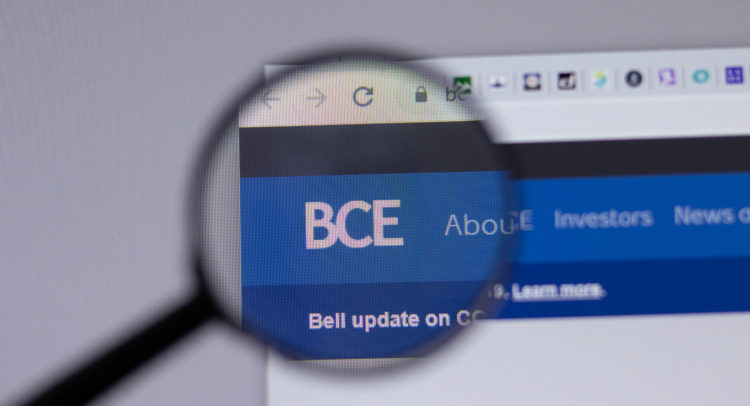When it comes to seeking reliable income, there are a few industries that tend to provide safe and reliable dividends. In Canada, those are typically banks, telecoms, and utilities. Why these three in particular? This is because regulation is such that the industry leaders have a dominant market share.
Claim 50% Off TipRanks Premium and Invest with Confidence
- Unlock hedge-fund level data and powerful investing tools designed to help you make smarter, sharper decisions
- Stay ahead of the market with the latest news and analysis so your portfolio is always positioned for maximum potential
A great example of this is BCE Inc (BCE), the largest telecommunications company in the country. BCE forms an oligopoly with Telus (TU) and Rogers Communications (RCI). Combined, these companies dominate, with 90%+ of the Canadian market.
For its part, BCE has roughly 10 million customers, which accounts for roughly 30% of the market. Despite the company’s dominant position, I am neutral on the company.
Mixed Q4 Results
In early February, BCE reported mixed Fiscal 2021 Q4 and year-end results. Fourth-quarter earnings of C$0.76 beat by C$0.03, and revenue of C$6.21 billion missed by C$18 million. Adjusted EBITDA also came in about a percentage point lighter than expected and EBITDA margins missed by 30 basis points.
To end the year, the wireline segment accounted for 54% of total EBITDA, while wireless composed 39% and media provided the remainder. While the numbers were ok, there is a considerable lack of growth at the company.
Fiscal 2021 revenue grew by only 2.4% over Fiscal 2020, and the company’s five-year annual average comes in at a paltry 1.54%. Similarly, adjusted EPS only grew 5.6% this past year, and thanks to the pandemic, it is sitting on a -2.17% annual five-year average.
The good news is that growth is expected to tick higher in Fiscal 2022. Analysts are expecting adjusted EPS and revenue growth of 9.5% and 3.2%, respectively. While this won’t attract many growth investors, they are notably higher than historical averages.
5% Dividend Raise
Along with Q4 results, BCE announced a 5% raise to the dividend. The raise is in line with historical averages and effectively extends the dividend growth streak to 14 years. While this may not seem like a long streak, it is worth noting that a failed takeover attempt by the Ontario Teacher’s Pension Plan back in the mid-to-late 2000s led to a stagnant dividend.
Had this failed takeover not taken place, BCE’s streak would be north of 20 years. Of note, for the past few years, BCE’s payout ratio against earnings has eclipsed 100%. Today, the dividend accounts for ~115% of earnings.
While this is certainly a warning flag, it is worth noting that pandemic-related charges have negatively impacted income statements across the country. In fact, BCE’s payout ratio only eclipsed 100% since the start of the pandemic. That being said, it was on the rise pre-pandemic since dividend growth rates outpaced earnings growth.
While it is worth monitoring, if one digs deeper, there is no immediate reason for concern. As a telecom, BCE has significant amortization and depreciation charges which negatively impact earnings. These have no impact on cash flows and, as such, have little effect on the company’s ability to pay the dividend.
That is why I prefer to look at the company’s payout ratio against cash flows. Today, the dividend accounts for only 41% of free cash flow – that is a much more sustainable ratio.
Wall Street’s Take
From Wall Street analysts, BCE earns a Moderate Buy consensus rating based on four Buys, four Holds, and no Sell ratings.
The average BCE price target of $53.68 puts the upside potential at 2.6%.

Conclusion
With a beta of 0.34, a dividend yield of ~5.6%, and low, single-digit growth, BCE is more appropriate for the defensive investor. The company’s size allows it to ward off any emerging competitors, but it is also too big to achieve meaningful growth. BCE is a bond-like substitute that offers a little growth and a higher than average yield.
Download the TipRanks mobile app now
To find good ideas for stocks trading at attractive valuations, visit TipRanks’ Best Stocks to Buy, a newly launched tool that unites all of TipRanks’ equity insights.
Read full Disclaimer & Disclosure
















